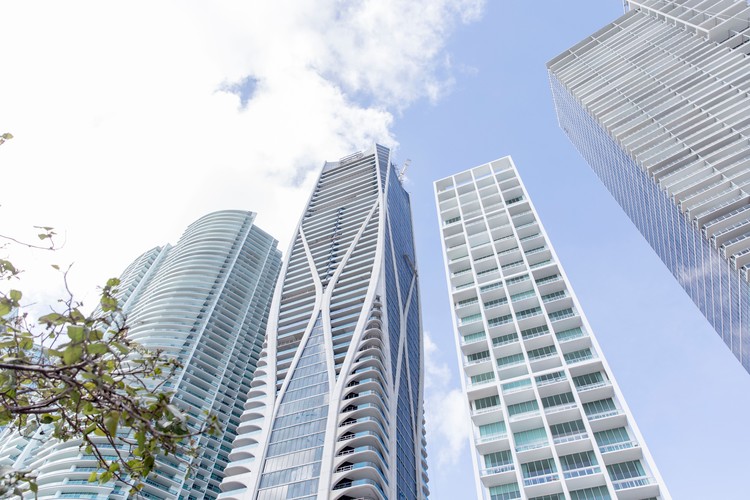The skyline of Miami, a cosmopolitan city known for its vibrant culture and eclectic styles, is graced with a distinctive architectural approach known as tropical modernism. This design, a confluence of functionality, local influences, and modern aesthetics, has carved a unique niche in the architectural world. A fusion of the sleek lines of modernist design and the lush, verdant surroundings unique to Florida, this style speaks to a lifestyle that celebrates nature and contemporary refinement. It represents a thoughtful response to the climate and cultural context of the region. Keep reading to uncover the nuances and distinct features of the tropical modern architecture that defines Miami’s visual landscape.
Exploring the Inspiration Behind Tropical Modern Architecture in Miami
The origins of tropical modern architecture in Miami can be traced back to the international style of the mid-20th century, adapted to the local environment with a regional twist. With Miami’s abundant sunshine, high humidity, and frequent rain showers, architects sought to create innovative and suitable homes for the tropical climate. The result was a style that utilized natural materials, open spaces, and passive cooling strategies.
At the heart of this architectural philosophy lies an appreciation for the serene beauty of the natural landscape. A tropical modern architect incorporates indigenous plants and utilizes large windows to blend the indoor and outdoor boundaries. Furthermore, the cool color palettes mirror the coastal setting, imbibing a sense of calm and relaxation in the habitats.
Artistic influences from the Caribbean and Central America also significantly shape the architectural flair of Miami’s tropical modern designs. These global inspirations bring a rich collage of textures and patterns and an open embrace of cultural diversity, which is intrinsic to Miami’s identity. Architects have drawn from these wide-ranging sources, positioning tropical modernism as a bridge between local tradition and international design elements.
Key Elements Defining Tropical Modernism in Miami Homes
One of the most recognizable features of tropical modernism is the overarching presence of nature. Miami homes in this style prioritize wide, open layouts that foster a seamless flow between the house and its natural surroundings. The integration of glass walls, sliding doors, and wide verandas emphasizes this alliance with nature.
Regarding structure, tropical modern homes typify clean, horizontal lines, flat or low-sloping roofs, and open floor plans. These elements encourage the dispersal of light and air throughout the space, hallmarking the pragmatic approach of the style. Cantilevered overhangs and shaded areas offer protection from the intense sun and heavy rainfalls, which are key considerations in Miami’s landscape.
Another crucial aspect of tropical modernism is the selection of materials. Architects often select natural materials such as wood, stone, and concrete that age beautifully under the sun and withstand the elements. These materials are chosen for their durability and natural appearance, enhancing the organic connection with the outdoor environment.
The Fusion of Indoor and Outdoor Spaces in Miami’s Tropical Modern Designs
A tropical modern architect in Miami creates designs that embody the essence of blending indoors with the outdoors. This is achieved by creating large openings that invite ample sunlight and facilitate a visual and accessible connection with gardens, pools, and patios. Veritable glass walls ensure the exterior view is a living, ever-changing artwork.
Overstepping the traditional boundaries of interior space is prominent in homes with outdoor rooms as extensions of the internal living areas. Lounges, dining areas, and even kitchens mirror their indoor counterparts, fostering an unparalleled sense of openness that is both liberating and intimate.
The meticulous positioning of water elements like pools and waterfalls further enhances residents’ sensory engagement with their habitat. The constant trickling sound of water melds with the gentle rustling of palm leaves, orchestrating a tranquil living environment that soothes the mind and captivates the senses.
Iconic Tropical Modern Structures: Examining Miami’s Architectural Landmarks
Miami is dotted with architectural landmarks that testify to the tropical modern movement. Iconic buildings harmonize with the landscape, showing the depth and versatility of this unique style. The seamless integration into the tropical backdrop makes them beloved landmarks.
From residential marvels to public spaces, these structures embrace the principles of light, space, and air. Renowned buildings that exhibit tropical modern design often become focal points for community gatherings and cultural events, symbolizing the dynamic fusion between human habitation and environmental mindfulness.
Overall, tropical modern architecture in Miami is a harmonious blend of design innovation, respect for nature, and sustainable living. Its significance lies not just in its visual appeal but also in its responsiveness to Miami’s cultural and environmental fabric. These homes and structures serve as a standard for what is achievable when intelligent design meets the needs of its environment, securing tropical modernism as a defining feature of Miami’s architectural legacy.







